- Administrator
- Albums and Singles
 What if Tito Puente, Kraftwerk and electric Miles Davis had jammed ...what would that have sounded like? German electronic duo BerndFriedmann (aka Burnt Friedman) and Uwe Schmidt (Atom Heart, SeøorCoconut, etc.) may provide the answer with their Flanger collaboration,this being the third album in just a few years for Ninja Tune. Theirmusic is thoroughly jazz - warm, spacious, latino jazz - where everysound glows with clarity and every song comfortably glides over theeardrums, even when it's frantic. Vibes, electric and upright basses,guitar, synth, organ and some saxophone and vocoded phrases provide thepalette, framed within often complex and rapid rhythmic layers. It's aninternational affair all around with many live players recorded inSantiago, Copenhagen and Cologne, some track titles in French, Spanishand German, and the album title inspired by an essay by British sci-fiauthor J. G. Ballard. Uwe and Burnt seem to enjoy obscuring the linebetween what is programmed and what is 'played', only revealing thedigital enhancements and editing here and there, when they choose to.Not that it really matters mind you. The all important question is'does it have soul?' and the answer is a resounding 'yes'. It's anotherstellar 46 and 1/2 minutes worth of Flanger, more focused than ever.
What if Tito Puente, Kraftwerk and electric Miles Davis had jammed ...what would that have sounded like? German electronic duo BerndFriedmann (aka Burnt Friedman) and Uwe Schmidt (Atom Heart, SeøorCoconut, etc.) may provide the answer with their Flanger collaboration,this being the third album in just a few years for Ninja Tune. Theirmusic is thoroughly jazz - warm, spacious, latino jazz - where everysound glows with clarity and every song comfortably glides over theeardrums, even when it's frantic. Vibes, electric and upright basses,guitar, synth, organ and some saxophone and vocoded phrases provide thepalette, framed within often complex and rapid rhythmic layers. It's aninternational affair all around with many live players recorded inSantiago, Copenhagen and Cologne, some track titles in French, Spanishand German, and the album title inspired by an essay by British sci-fiauthor J. G. Ballard. Uwe and Burnt seem to enjoy obscuring the linebetween what is programmed and what is 'played', only revealing thedigital enhancements and editing here and there, when they choose to.Not that it really matters mind you. The all important question is'does it have soul?' and the answer is a resounding 'yes'. It's anotherstellar 46 and 1/2 minutes worth of Flanger, more focused than ever.
samples:
Read More
 Two years in the making, Michael Gira (SWANS, The Angels of Light) andDan Matz (Windsor for the Derby, The Birdwatcher) casually created andrecorded a dozen songs together in the relaxed setting of Matz's homes.Both men are simply credited with various instruments and vocals (plusengineering by Matz) and generally alternate lead vocals track to tracksave for a lone instrumental. The instrumentation is actually quiteextensive, approaching the ornate fleshing out of an Angels album:acoustic and electric guitars, bass guitar, organ, piano, synth,drums/percussion, drum machine, harmonica, banjo, a few samples andsome guitar by James Plotkin and background vocals by Anna Neighbor. Ifyou're coming to this disc via Gira and/or Matz's other endeavors, youwon't be surprised but will probably be as pleased with the results asI am. These are 'simple', spontaneous 'pop' songs as affected byAmericana as they are the avant-garde. And the pair's voices, poetryand basic song writing skills and styles complement one another well.The sound and feel is mostly slow and subdued, the mood in varyingdegrees of what I like to call 'uplifting melancholy'. Brief commentson a handful of tracks: "Pacing the Locks" beautifully mourns thepassing of time, "Is/Was" becomes soaked in shimmering synth bath andbell tones, "Lines" is pretty pop steeped in blue grass roots, "BrownEyes" and "Waiting Beside Viragio" are sparse, seemingly solo lovesongs, "Forcing Mary" will nod your head with driving guitar stabs and"Sunflower" is the peculiar instrumental, a droning hum with sprinklesof piano, guitar and whistling. Though I'm not (yet) as taken with"What We Did" start to finish as I am The Angels of Light's "NewMother" and "How I Loved You", I'm still more than happy with what theydid. Gira is currently on tour with The Angels of Light in NorthAmerica through mid December.
Two years in the making, Michael Gira (SWANS, The Angels of Light) andDan Matz (Windsor for the Derby, The Birdwatcher) casually created andrecorded a dozen songs together in the relaxed setting of Matz's homes.Both men are simply credited with various instruments and vocals (plusengineering by Matz) and generally alternate lead vocals track to tracksave for a lone instrumental. The instrumentation is actually quiteextensive, approaching the ornate fleshing out of an Angels album:acoustic and electric guitars, bass guitar, organ, piano, synth,drums/percussion, drum machine, harmonica, banjo, a few samples andsome guitar by James Plotkin and background vocals by Anna Neighbor. Ifyou're coming to this disc via Gira and/or Matz's other endeavors, youwon't be surprised but will probably be as pleased with the results asI am. These are 'simple', spontaneous 'pop' songs as affected byAmericana as they are the avant-garde. And the pair's voices, poetryand basic song writing skills and styles complement one another well.The sound and feel is mostly slow and subdued, the mood in varyingdegrees of what I like to call 'uplifting melancholy'. Brief commentson a handful of tracks: "Pacing the Locks" beautifully mourns thepassing of time, "Is/Was" becomes soaked in shimmering synth bath andbell tones, "Lines" is pretty pop steeped in blue grass roots, "BrownEyes" and "Waiting Beside Viragio" are sparse, seemingly solo lovesongs, "Forcing Mary" will nod your head with driving guitar stabs and"Sunflower" is the peculiar instrumental, a droning hum with sprinklesof piano, guitar and whistling. Though I'm not (yet) as taken with"What We Did" start to finish as I am The Angels of Light's "NewMother" and "How I Loved You", I'm still more than happy with what theydid. Gira is currently on tour with The Angels of Light in NorthAmerica through mid December.
samples:
- Administrator
- Albums and Singles
 Two years in the making, Michael Gira (SWANS, The Angels of Light) andDan Matz (Windsor for the Derby, The Birdwatcher) casually created andrecorded a dozen songs together in the relaxed setting of Matz's homes.Both men are simply credited with various instruments and vocals (plusengineering by Matz) and generally alternate lead vocals track to tracksave for a lone instrumental. The instrumentation is actually quiteextensive, approaching the ornate fleshing out of an Angels album:acoustic and electric guitars, bass guitar, organ, piano, synth,drums/percussion, drum machine, harmonica, banjo, a few samples andsome guitar by James Plotkin and background vocals by Anna Neighbor. Ifyou're coming to this disc via Gira and/or Matz's other endeavors, youwon't be surprised but will probably be as pleased with the results asI am. These are 'simple', spontaneous 'pop' songs as affected byAmericana as they are the avant-garde. And the pair's voices, poetryand basic song writing skills and styles complement one another well.The sound and feel is mostly slow and subdued, the mood in varyingdegrees of what I like to call 'uplifting melancholy'. Brief commentson a handful of tracks: "Pacing the Locks" beautifully mourns thepassing of time, "Is/Was" becomes soaked in shimmering synth bath andbell tones, "Lines" is pretty pop steeped in blue grass roots, "BrownEyes" and "Waiting Beside Viragio" are sparse, seemingly solo lovesongs, "Forcing Mary" will nod your head with driving guitar stabs and"Sunflower" is the peculiar instrumental, a droning hum with sprinklesof piano, guitar and whistling. Though I'm not (yet) as taken with"What We Did" start to finish as I am The Angels of Light's "NewMother" and "How I Loved You", I'm still more than happy with what theydid. Gira is currently on tour with The Angels of Light in NorthAmerica through mid December.
Two years in the making, Michael Gira (SWANS, The Angels of Light) andDan Matz (Windsor for the Derby, The Birdwatcher) casually created andrecorded a dozen songs together in the relaxed setting of Matz's homes.Both men are simply credited with various instruments and vocals (plusengineering by Matz) and generally alternate lead vocals track to tracksave for a lone instrumental. The instrumentation is actually quiteextensive, approaching the ornate fleshing out of an Angels album:acoustic and electric guitars, bass guitar, organ, piano, synth,drums/percussion, drum machine, harmonica, banjo, a few samples andsome guitar by James Plotkin and background vocals by Anna Neighbor. Ifyou're coming to this disc via Gira and/or Matz's other endeavors, youwon't be surprised but will probably be as pleased with the results asI am. These are 'simple', spontaneous 'pop' songs as affected byAmericana as they are the avant-garde. And the pair's voices, poetryand basic song writing skills and styles complement one another well.The sound and feel is mostly slow and subdued, the mood in varyingdegrees of what I like to call 'uplifting melancholy'. Brief commentson a handful of tracks: "Pacing the Locks" beautifully mourns thepassing of time, "Is/Was" becomes soaked in shimmering synth bath andbell tones, "Lines" is pretty pop steeped in blue grass roots, "BrownEyes" and "Waiting Beside Viragio" are sparse, seemingly solo lovesongs, "Forcing Mary" will nod your head with driving guitar stabs and"Sunflower" is the peculiar instrumental, a droning hum with sprinklesof piano, guitar and whistling. Though I'm not (yet) as taken with"What We Did" start to finish as I am The Angels of Light's "NewMother" and "How I Loved You", I'm still more than happy with what theydid. Gira is currently on tour with The Angels of Light in NorthAmerica through mid December.
samples:
Read More
- Administrator
- Albums and Singles
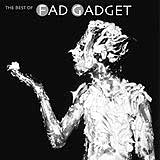 If you own any records from The Faint, Ladytron, Fisherspooner, I am Spoonbender, Adult, or G.D. Luxxe, owning no Fad Gadget albums is completely unacceptable. Mute began releasing Fad Gadget (their first signing in fact) back in 1979, and over the course of four full-length albums, Frank Tovey managed to firmly establish electronic music as a new form of punk, combining abrasive synths, punchy drum machines, the occasional vibrophone or other organic instruments, and clever lyrics.
If you own any records from The Faint, Ladytron, Fisherspooner, I am Spoonbender, Adult, or G.D. Luxxe, owning no Fad Gadget albums is completely unacceptable. Mute began releasing Fad Gadget (their first signing in fact) back in 1979, and over the course of four full-length albums, Frank Tovey managed to firmly establish electronic music as a new form of punk, combining abrasive synths, punchy drum machines, the occasional vibrophone or other organic instruments, and clever lyrics.
Over the years, I have played Fad Gadget to many friends and have always recommended 'Frank Tovey: The Fad Gadget Singles' as a starting point, but that album was only ever available through mail-order in the UK as far as I can remember. There hasn't been a real interest in Fad Gadget in years. It's a shame, however, as analogue-synth punk has become all the rage with the hipster indie kids. Regardless, Tovey is clearly an original. This collection gathers everything from that collection (all the A-sides and a few more classics), adds a couple more b-sides and an entire second CD of remixes. Forceful power-synth gems like "For Whom the Bells Toll" and "Collapsing New People" (satirizing Einsturzende Neubauten or club-going industro-goths) will be recognizable to anybody who has visited goth/industrial clubs while "I Discover Love" is an easy pleaser for the swinging Foetus fans. My favorites include the much-overlooked single "Life On the Line" and incredibly haunting "Lady Shave". My only complaints about this collection are about the poor mastering job: the levels on disc one are so loud that there's an unavoidable clipping going on, while much of the material on disc two has been mastered from the records themselves. But hey, clicks and cuts are "in" as well, so many people won't mind as much as me. 'The Best of' is available now in Europe and will be released next week in North America. Add it to the Christmas list of your favorite analogue-synth lovin' punker.
samples:
Read More
- Administrator
- Albums and Singles
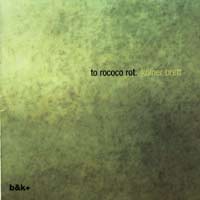 I wish I could properly credit whoever once said, "Talking about musicis like dancing about architecture." To Rococo Rot have assembled acollection of music about architecture that, could very quite easily bedanced to. The group return to the core trio for this unique release,out now on the German Staubgold label. The disc features twelve new,unnamed three-minute tracks which provided the sound for anarchitectural exhibit earlier this year. The music is meant torepresent the building of the same name, which consists of twelveequally sized single units, efficiently designed for both living andworking space. (Gosh those Germans sure do love their crafty designs.)While the group consciously chose to work within the 3-minute frameworkfor each track, the tracks are far from identical. Everybody gets thesame amount of space but can do whatever they want within that space,essentially. While it may not be considered a bonafide, typical fullTRR release, many of the songs are quite clearly TRR, using a healthyvariety of electronic beats, organic bass and guitar, and warm synths.The songs vary from mid-tempo multi-instrument interplays to beat-lesssoftware-based aural wallpaper. While it may have been designed for amore chin-scratching artsy acceptance, it's a great listen in,ironically enough, the home office.
I wish I could properly credit whoever once said, "Talking about musicis like dancing about architecture." To Rococo Rot have assembled acollection of music about architecture that, could very quite easily bedanced to. The group return to the core trio for this unique release,out now on the German Staubgold label. The disc features twelve new,unnamed three-minute tracks which provided the sound for anarchitectural exhibit earlier this year. The music is meant torepresent the building of the same name, which consists of twelveequally sized single units, efficiently designed for both living andworking space. (Gosh those Germans sure do love their crafty designs.)While the group consciously chose to work within the 3-minute frameworkfor each track, the tracks are far from identical. Everybody gets thesame amount of space but can do whatever they want within that space,essentially. While it may not be considered a bonafide, typical fullTRR release, many of the songs are quite clearly TRR, using a healthyvariety of electronic beats, organic bass and guitar, and warm synths.The songs vary from mid-tempo multi-instrument interplays to beat-lesssoftware-based aural wallpaper. While it may have been designed for amore chin-scratching artsy acceptance, it's a great listen in,ironically enough, the home office.
samples:
Read More
- Administrator
- Albums and Singles
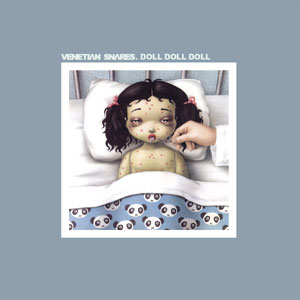 I'll be the first to say I'm not that big of a fan of Venetian Snares.He seems to be praised and lauded from every corner of the earth as agreat innovator and musician, but most of his stuff bores the crap outof me. For the most part, he seems to be "experimental forexperimentality's sake," with a sort of anti-rhythmic edict and anI-must-change-time-signatures-every-twelve-seconds attitude. That getsreally annoying, in my opinion, and it's probably the biggest problemwith this latest album, but nonetheless I like it quite a bit.
I'll be the first to say I'm not that big of a fan of Venetian Snares.He seems to be praised and lauded from every corner of the earth as agreat innovator and musician, but most of his stuff bores the crap outof me. For the most part, he seems to be "experimental forexperimentality's sake," with a sort of anti-rhythmic edict and anI-must-change-time-signatures-every-twelve-seconds attitude. That getsreally annoying, in my opinion, and it's probably the biggest problemwith this latest album, but nonetheless I like it quite a bit.That's right, I like the album quite a bit. The atmosphere and samplesreally work well (not to mention the *awesome* Trevor Brown artwork) -"we be friends with a child killer..." but of course the mainattraction is the percussion. Which is the best part of the album aswell as the worst part of the album. Like on the last track, "All theChildren Are Dead"... that is insane percussion. And I mean *insane*.
But then, as on the first track, "Pygmalion," the percussion can holdso much potential and then fall completely utterly flat. Crazy awesomebuildup, as if everything were going to explode right in your bigstupid face, and then - it stops - and doesn't start again. What aGODDAMNED let-down. And these same kind of moments occur throughout thealbum... points where you THINK you should hear a break, or a drum, orsomething - but no! Aaron Funk is experimental! He is not drum'n'bass -this is not dance music! Yeah, whatever. Go have sex with Kid 606.
samples:
Read More
- Administrator
- Albums and Singles
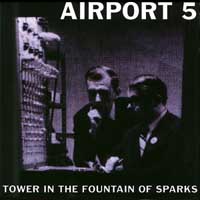 #15 in the Fading Captain Series, this release from Airport 5 is thefirst LP Rob Pollard has recorded with Tobin Sprout since the latterleft Guided By Voices to focus on his solo career. Given those keypieces of information, one could probably form a pretty solidpreconception about the sound of this record and what they might findwhen listening to it. Let's face it: Pollard is one of those artiststhat you either love or despise. So those who don't Like any ofPollard's music with Guided By Voices or the plethora of other bandshe's in, skip right over this review. The other camp will be happy toknow that these two artists still make magic together, and it's in rareform all over this release. From the first track, "Burns Carpenter, ManOf Science," you're drawn in to that weird land where anything ispossible, at least lyrically speaking. And it's an amazing thing,considering that the music and words were recorded separately (possiblyeven written separately). Sprout is an amazingly talented musician,capable of playing all the components that make up your average bandstructure, and writing melodies that hold great hooks and fantastictwists and variations. And Pollard is just plain weird. Any man whowrites songs about bright paper werewolves or scientists creatingliquid forms of love has some issues to resolve. But together it makesfor fascinating music, as it has in the past. I'm glad theses twomusicians are working together again, because these initial results areproof that thos combination still works. I hope to hear more fromAirport 5 soon.
#15 in the Fading Captain Series, this release from Airport 5 is thefirst LP Rob Pollard has recorded with Tobin Sprout since the latterleft Guided By Voices to focus on his solo career. Given those keypieces of information, one could probably form a pretty solidpreconception about the sound of this record and what they might findwhen listening to it. Let's face it: Pollard is one of those artiststhat you either love or despise. So those who don't Like any ofPollard's music with Guided By Voices or the plethora of other bandshe's in, skip right over this review. The other camp will be happy toknow that these two artists still make magic together, and it's in rareform all over this release. From the first track, "Burns Carpenter, ManOf Science," you're drawn in to that weird land where anything ispossible, at least lyrically speaking. And it's an amazing thing,considering that the music and words were recorded separately (possiblyeven written separately). Sprout is an amazingly talented musician,capable of playing all the components that make up your average bandstructure, and writing melodies that hold great hooks and fantastictwists and variations. And Pollard is just plain weird. Any man whowrites songs about bright paper werewolves or scientists creatingliquid forms of love has some issues to resolve. But together it makesfor fascinating music, as it has in the past. I'm glad theses twomusicians are working together again, because these initial results areproof that thos combination still works. I hope to hear more fromAirport 5 soon.
samples:
Read More
- Administrator
- Albums and Singles
 The fourth full-length studio album from this English quartet is boththeir most vocal and most structured release to date, focusing moresoon songcraft and development than ever before. Fear not, however, asthere's still a large amount of improvisational influences and playfulfuckery on nearly everything, including sounds of the bathtub, cellularphones, and kitchen utensils alongside the intentionally mis-playedstandard rock instruments, classical and jazz wind instruments,strings, accordion, and numerous percussion tools. If there's one thingsmoking pot teaches you, it's how to become a craftsman (how to makethe best bong out of a melon, etc,...) and I have always consideredVolcano the Bear to be a crafty group of lads. Over the few releasesthey've had, it's clearly visible how the lot is increasinglyharnessing that craftmanship into a more organized, bridled chaos. Onceagain, the group recorded with Kev Reverb — once described as "a tenfoot tall cowboy with sunglasses, dressed all in black and possessing avoice like The Voice Of DOOM" — who runs an appropriately named'Memphis studios' out of Leicester, UK. The album contains punchdrunksurrealistic singalongs like the opener, "Hairy Queen" and parts of"Seeker" as well as lengthy drawn-out mostly instrumentaleverything-and-the-kitchen-sink pieces like the title track, withsuggestive hints of traveling minstrals in the album's closer, "I amthe Mould". If I could recommend any album to aquire and memorize onlyto bring to your school's art class only to play and sing along withand confuse the fuck out of those "artistes," this would be it. 'FiveHundred Boy Piano' is their second release for Steven Stapleton'sUnited Dairies label, and features artwork from each of the members aswell as Stapleton, himself.
The fourth full-length studio album from this English quartet is boththeir most vocal and most structured release to date, focusing moresoon songcraft and development than ever before. Fear not, however, asthere's still a large amount of improvisational influences and playfulfuckery on nearly everything, including sounds of the bathtub, cellularphones, and kitchen utensils alongside the intentionally mis-playedstandard rock instruments, classical and jazz wind instruments,strings, accordion, and numerous percussion tools. If there's one thingsmoking pot teaches you, it's how to become a craftsman (how to makethe best bong out of a melon, etc,...) and I have always consideredVolcano the Bear to be a crafty group of lads. Over the few releasesthey've had, it's clearly visible how the lot is increasinglyharnessing that craftmanship into a more organized, bridled chaos. Onceagain, the group recorded with Kev Reverb — once described as "a tenfoot tall cowboy with sunglasses, dressed all in black and possessing avoice like The Voice Of DOOM" — who runs an appropriately named'Memphis studios' out of Leicester, UK. The album contains punchdrunksurrealistic singalongs like the opener, "Hairy Queen" and parts of"Seeker" as well as lengthy drawn-out mostly instrumentaleverything-and-the-kitchen-sink pieces like the title track, withsuggestive hints of traveling minstrals in the album's closer, "I amthe Mould". If I could recommend any album to aquire and memorize onlyto bring to your school's art class only to play and sing along withand confuse the fuck out of those "artistes," this would be it. 'FiveHundred Boy Piano' is their second release for Steven Stapleton'sUnited Dairies label, and features artwork from each of the members aswell as Stapleton, himself.
samples:
Read More
- Administrator
- Albums and Singles
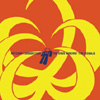 For their Warp Records debut, Antipop present a 7 track EP that's donespinning in less than 17 minutes. Warp may seem like a strange placefor an MC trio to be, but APC's hip hop is as electronic and forwardthinking as anything else on the label. NYC's Beans, Priest and Sayidfastidiously flow mile a minute rhymes, as always, and are as involvedin the sparse yet phat production as producer/engineer/arranger/mixerEarl Blaize. "Tuff Gong" gets right up in your face quick, Sayidletting you know within the minute that he "have the need to tell whatI see". "Splinter" is as close as you'll get to verse chorus verse butlike "Vector", it's a bit too laden with annoying synth notes. Moog andsynth lines help propel the instrumental future funk groove of"Dystopian Disco Force". In "39303," Priest testifies, "I write like aman who can't read / feelin' the need / to seize his mind of reason / Ispit treason / MCs in season / vets freezin' / I rap like there'snothin' left to believe in / clumsily uneven," seconds before his voiceis panned to one channel and digital gurgles fill the opposite one.Next, "Pit," disorients with 2 minutes worth of veering tones, off/onbeeps and ping pong ball percussion, then "Perpendicular" adds another2 minutes of tasty piano and atmosphere enhanced hip hop beats. Thisdisc is all over the place, much like an APC album, but it's all themore obvious in such a short time span. And unfortunately, I'd say only4 tracks are really necessary (but hey, it's only ~$7) so here'slooking forward to the debut album for Warp set to drop early nextyear. In the meantime, get "Tragic Epilogue" and "Shopping CartsCrashing" if'n you don't already have 'em.
For their Warp Records debut, Antipop present a 7 track EP that's donespinning in less than 17 minutes. Warp may seem like a strange placefor an MC trio to be, but APC's hip hop is as electronic and forwardthinking as anything else on the label. NYC's Beans, Priest and Sayidfastidiously flow mile a minute rhymes, as always, and are as involvedin the sparse yet phat production as producer/engineer/arranger/mixerEarl Blaize. "Tuff Gong" gets right up in your face quick, Sayidletting you know within the minute that he "have the need to tell whatI see". "Splinter" is as close as you'll get to verse chorus verse butlike "Vector", it's a bit too laden with annoying synth notes. Moog andsynth lines help propel the instrumental future funk groove of"Dystopian Disco Force". In "39303," Priest testifies, "I write like aman who can't read / feelin' the need / to seize his mind of reason / Ispit treason / MCs in season / vets freezin' / I rap like there'snothin' left to believe in / clumsily uneven," seconds before his voiceis panned to one channel and digital gurgles fill the opposite one.Next, "Pit," disorients with 2 minutes worth of veering tones, off/onbeeps and ping pong ball percussion, then "Perpendicular" adds another2 minutes of tasty piano and atmosphere enhanced hip hop beats. Thisdisc is all over the place, much like an APC album, but it's all themore obvious in such a short time span. And unfortunately, I'd say only4 tracks are really necessary (but hey, it's only ~$7) so here'slooking forward to the debut album for Warp set to drop early nextyear. In the meantime, get "Tragic Epilogue" and "Shopping CartsCrashing" if'n you don't already have 'em.
samples:
Read More
- Administrator
- Albums and Singles
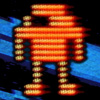 The use of 8 bit chiptune sounds has been extending beyond the insular video game world and into other genres.  Dusty old Nintendo consoles and Commodore 64 computers have been reprogrammed into musical instruments for years now, and there is an entire compilation album of artists using only the Game Boy based Nanoloop software.  Return of the Bloop Beep Buzz pushes this concept even further, using the even more primitive Atari 2600 as its primary source, resulting in a limited, but still unique sonic palette.
The use of 8 bit chiptune sounds has been extending beyond the insular video game world and into other genres.  Dusty old Nintendo consoles and Commodore 64 computers have been reprogrammed into musical instruments for years now, and there is an entire compilation album of artists using only the Game Boy based Nanoloop software.  Return of the Bloop Beep Buzz pushes this concept even further, using the even more primitive Atari 2600 as its primary source, resulting in a limited, but still unique sonic palette.
While the venerable 2600 isn't the most primitive of video game technology, it certainly is close, producing limited graphics and even more limited sounds.Mike Bourque sticks mostly to just the stock system, throwing in processing via the occasional guitar pedal, but never enough to obscure the underlying sounds.
Tracks like "Xenotropolis" and "Red Dragon vs. Square Dude" shape the white noise blasts into a rudimentary drum machine, pushing out a gabber-type throb over bassy abstract loops and Pac-Man like melodic outbursts.Hints of some of the earliest Digital Hardcore releases pop up, but the sound is completely unique.
"Interlocking Secrets" and "Full Attack Mode" also keep a rhythmic structure to them, but it's less of a focus, and more about obtuse loops and dissonant electronics."Wave 44" also is as conceptual as it is rhythmic, building from a dramatically thin, brittle rhythm in to a slightly thicker, but still heavily filtered ending.
The early-Autechre like glitchy crunch of "Dr. Mindbender in the Lab" and technoid thump of "Jammas on the Amazon" round out the multifaceted beat-centric tracks, but there’s also a few abstract, ambient-heavy moments scattered throughout.The textural, amorphous "Xenotropolis" leans into ambient techno realms, but in anything but the conventional sense.
"The Zaxxonian Theory" also is arrhythmic, with outstretched passages of sound and less of a perceptible formal structure, similar to the closer "Into the Darkness we Goeth".This track lets in a bit of industrial rhythmic thump, but ends in an over-driven, noise laden blast, perhaps taking the sound the furthest from its simplistic roots but never fully hiding where it came from.
I've always considered the "chiptune" scene more of a novelty than any meaningful music genre, and I’m probably the biggest video game fan on staff here at Brainwashed.However, this album goes beyond just novelty and is more of a study of limited instrumentation, reshaping the familiar lo-fi sounds into both beats and ambience.While the reliance on a singular source cuts the track-to-track diversity down a bit, the variation in structures covers for it nicely.Surely gamers will get more out of the disc than others, but its appeal wouldn't be limited to just that group.
samples:
 
Read More
- Administrator
- Albums and Singles
 This album actually came as quite a surprise as soon as I started spinning it. I've always associated Wiese with hyper-kinetic, harsh laptop-sourced noise above all, and the seven tracks on this compilation instead show a tamer, more droning electronic sound, with the occasional bit of abstract electro-acoustic collage.
This album actually came as quite a surprise as soon as I started spinning it. I've always associated Wiese with hyper-kinetic, harsh laptop-sourced noise above all, and the seven tracks on this compilation instead show a tamer, more droning electronic sound, with the occasional bit of abstract electro-acoustic collage.
The pieces were created between 2004 and 2010, with some being sample-focused studio recordings, and others straight up live performances.What links them together is a focus less on raw dissonance, and more on sparse textures or droning electronics.
Opener "The New Dark Ages" heralds this immediately.The deep bassy rumble and tiny bits of static seem like they could open into full bore noise at any time, but instead they move at the speed of tectonic plates, blending in droning tones that never become too dominant."Burn Out," recorded live at No Fun Fest in 2006 is a similarly restrained work, slowly introducing deep, rattling tones and subtle noise.While the sound gets a bit raw later in the piece, things never get out of hand.
"Corpse Solo" and "Don't Move Your Finger" are less about the droning and more found sound/electro-acoustic improvisations.Taut, chaotic outbursts surge through both tracks, with the former drifting into slightly harsher territories, reminiscent of the Dadaist cutups of Runzelstirn & Gurgelstock.
The two long pieces that were recorded in 2010 are the culmination of the other tracks, encapsulating both jarring outbursts and tonal resonations."Scorpion Immobilization Sleeve" sounds like its built on a foundation of captured guitar feedback and erratic percussive thuds.It constantly changes forms as it goes on, picking up some of the collage-y elements and even a bit of harshness, but never going too far.
"Don't Stop Now, You're Killing Me" brings in some identifiable sounds, namely human voice and cymbal rattles, with neither used in a conventional manner.The voice (from Angus Andrew) is instead a guttural, pained death rattle that barely sounds human.While some of the other tracks have an inviting, almost mellow sound about them, here it’s purely sinister.
While I knew Wiese had expanded beyond just harsh noise, I didn't know his repertoire had become this diverse.Owing as much to the modern drone/doom world as the old school of experimental electronics, it’s a compilation that feels like a well planned, diverse album, which is no easy feat.Even people without a Merzbow record in their collection (if such people exist) can appreciate this one.
samples:
 
Read More


